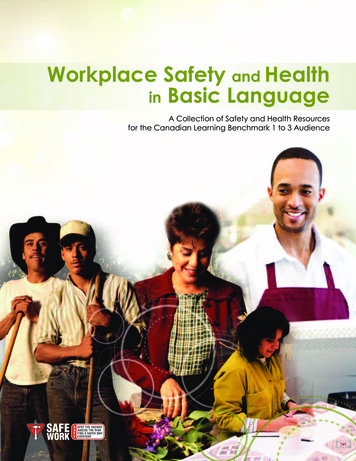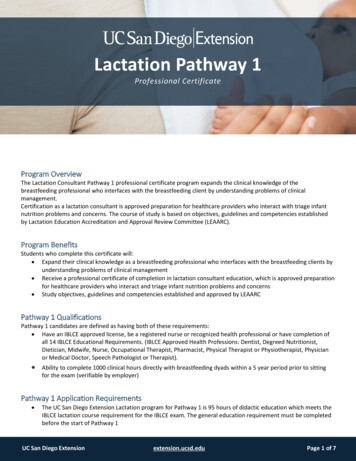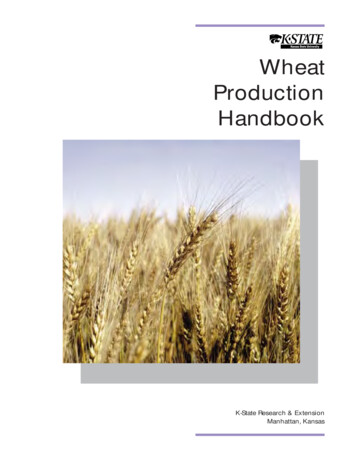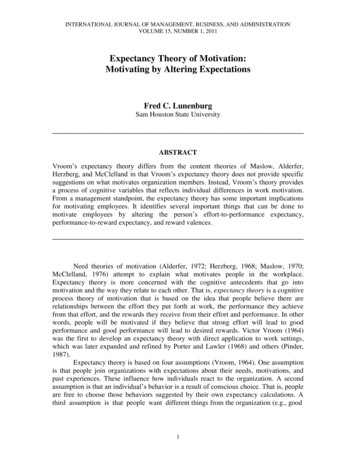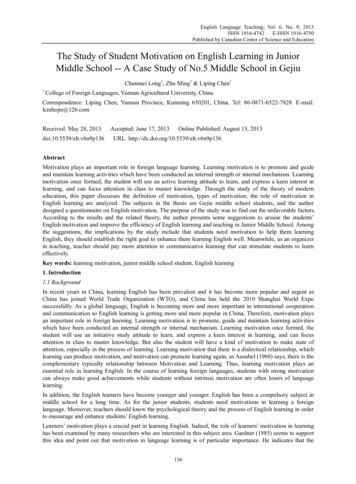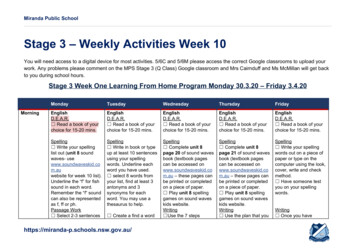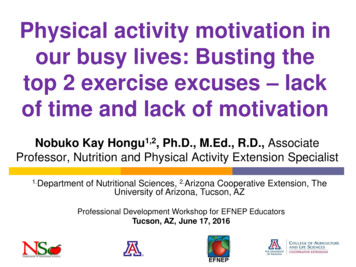
Transcription
Physical activity motivation inour busy lives: Busting thetop 2 exercise excuses – lackof time and lack of motivationNobuko Kay Hongu1,2, Ph.D., M.Ed., R.D., AssociateProfessor, Nutrition and Physical Activity Extension Specialist1.Departmentof Nutritional Sciences, 2.Arizona Cooperative Extension, TheUniversity of Arizona, Tucson, AZProfessional Development Workshop for EFNEP EducatorsTucson, AZ, June 17, 2016
OutlineKay Hongu, Extension Specialist, Department of Nutritional SciencesBenefits of Physical Activity (PA)I.II.PA saves lives and protects health (CDC)PA – key factor for weight loss and weightmanagementI.II.I.II.Obstacles preventing regular PAIII.I.II.V.High Energy Flux ConceptWhy you cannot lose weight on Diet? – The “BiggestLoser” studyLack of time tips to overcomeLack of motivation tips to overcomeQuestions & Answers
Kay Hongu, Ph.D., M.Ed., R.D. Education and Training Research and Extension Interests Post-Doctoral Fellowship - Vanderbilt University, Department ofMedicine, and Meharry Medical College, Nashville, TNPh.D. - Human Ecology: The University of Tennessee, Knoxville, TN(Specialization: Nutritional Sciences, Exercise Physiology)M.Ed. - The University of Akron, Akron, OH (Specialization: ExercisePhysiology, Physical and Health Education)B.A. - Education/Physical Education: Mukogawa Women's University,Hyogo, JapanNutrition and PA research & education – Walk Across Arizonaprogram, HomeStyles ProjectInnovation & Technology Development – Recaller appEnvironmental Sustainability & Healthy LifestylePhone: 520-982-0012 (mobile) or 520-626-2085 (office)E-mail: hongu@email.arizona.edu
Benefits of Physical Activity “Exercise is Medicine” - “If exercise could be packedin a pill, it would be the single most widely prescribed andbeneficial medicine in the nation.” (Robert N. Butler, MD,National Institute on Aging)
Physical Activity GuidelinesGuidelines: PA Guidelines for Americans, CDC,AHA, ACSMTo maintain your weight – 150 minutes of moderateintensity activity a week You may need to do more than 150 minutes To lose weight and keep it off – need high amount ofPA Strength training – increase lean body mass2018 The Physical Activity Guidelines for Americans will bereleased in the future. The Office of Disease Preventionand Health Promotionhttp://health.gov/
Physical Activity for a Healthy Weight Most weight loss occurs because of decreasedcaloric intake. However, evidence shows the onlyway to maintain weight loss is to be engaged inregular PA.Greater amounts of PA are likely to be needed toachieve weight loss and prevent weight regain inadults. Energy/diet restriction combined with PA willincrease weight loss as compared to diet alone.
Concept of High Energy Flux
Concept of High Energy Flux Yo-Yo Diet
Concept of High Energy Flux Resting MetabolicRate Lean Mass
Concept of High Energy Flux
Why you cannot lose weight on diet alone? Persistent metabolic adaptation 6 years after“The Biggest Loser” competition (Fothergill etal, Obesity, May 2016) Objective: To measure long-term changes in RMR andbody composition in participants of “The Biggest Loser”competition.Methods: Body composition was measured by dualenergy X-ray absorptiometry, and RMR wasdetermined by indirect calorimetry at baseline, at theend of the 30-week competition and 6 years later.Results: 6 men and 8 women, 34.9 10.3 years,148.9 40.5 kg at baseline, lost 58.3 24.9 kg at theend of the 30-week competition.
Why you cannot lose weight on diet alone?Individual ( ) and mean (gray rectangles) changes in (A) body weight, (B) fat‐freemass, and (C) fat mass at the end of “The Biggest Loser” 30‐week weight losscompetition and after 6 years. Horizontal bars and corresponding P valuesindicate comparisons between 30 weeks and 6 years. *P 0.05 compared withbaseline.
Why you cannot lose weight on diet alone?Individual ( ) and mean (gray rectangles) changes in (A) resting metabolic rate and(B) metabolic adaptation at the end of “The Biggest Loser” 30‐week weight losscompetition and after 6 years. Horizontal bars and corresponding P values indicatecomparisons between 30 weeks and 6 years. *P 0.001 compared with baseline.
Why you cannot lose weight on diet alone?“The Biggest Loser” participants with thegreatest weight loss at the end of thecompetition also experienced the greatestslowing of RMR at that time. Similarly, those who were most successful atmaintaining lost weight after 6 years alsoexperienced greater ongoing metabolic slowing. These suggest that overweight people shouldfocus more on exercising in order to keep upRMR than on calorie restriction.
Obstacles preventing regular PAwww.cdc.gov/nccdphp/dnpaoObstacles preventing regular PA: Lack of time Lack of motivation Lack of specific goals Previous unenjoyable experiences of PA Don’t know where to start or what activities to do
Busting the Exercise ExcuseLack of time (barrier)Strategy: Help participants plan and organize a dayIdentify available PA time slots – cannot find? 1)2)3)Wake up earlier! (think after work you may be tooexhausted, too busy helping kids)Cut down on media – surfing the internet, spending timeon Facebook, etc.Be an active while watching TV 4)5)push-ups, walking around during commercialsSitting on a stability ballMake PA part of routine, daily tradition, like brushing teethMix socializing with exercising – planning PA events
Busting the Exercise ExcuseLack of time (barrier)Help participants prioritize PA1) Schedule a PA appointment – do as a doctor’sappointment2) Write it in your calendar, and treat it like anyother appointment you can not miss3) Look at priorities and responsibilities, prioritizeyour PA that other obligations to others
Busting the Exercise ExcuseLack of Motivation (barrier)Strategy: Evaluate an individual’s readiness forfitting PA in to busy lives using the transtheoreticalmodel of behavior change (stages of change model) Stage 1- Pre-contemplation: Not ready to exercise norinterested in pursuing exercise. (They may have failed in thepast and have giving up.) The benefits of exercise, how PA might be good, must be identifiedbefore talking about how to start PA programStage 2 - Contemplation: Thinking about pursuing exercise(thinking about making a behavior change). Try new and different PA options. Find ways to make PA moreenjoyable. The goal at this stage is to make a commitment.
Busting the Exercise Excuse Lack of Motivation (barrier)Stage 3 - Preparation: Doing something related to PA, butnot meeting the guidelines for PA (individual intends to takeaction, usually within the next month). The goal of this stage is to create specific plan for regular PA.They should know how much, how hard (intensity), and types ofPA they should be doing regularly.At this stage, new PA app, wristband activity monitor, or newexercise clothing may help motivated.
Busting the Exercise ExcuseLack of Motivation (barrier)Stage 4 - Action: Meeting the PA guidelines for less than6 months (engaging in behavior change for less than sixmonths. This is the stage where people are most likely todrop out or give up). This stage requires more commitment and energy. Givereminders to exercise. Have a backup plan, and have a friendsto work out.
Busting the Exercise ExcuseLack of Motivation (barrier)Stage 5 - Maintenance: Meeting the PAguidelines for 6 months or more (individual isworking on maintaining the health behavior). At this stage, PA has started to become a habit. Thegoal here is to prevent getting bored with routineworkout. Change any part of routine, starting a newprogram, or joining a new class, if need it.Feel the benefits of regular PA and be proud ofyourself!
Summary PA can improve health. People who are physically activelive longer and have lower risks for some cancers, heartdisease, type 2 diabetes, and other chronic diseases.Understanding concept of high energy flux and applyingthis approach to a weight management plan may helpindividual who are trying to lose weight.Lack of time and lack of motivation are the top 2 obstaclespreventing regular PA. These obstacles can be overcomewith re-thinking, planning, prioritizing of PA.The 5 stages of change model is useful framework thatdescribes the series of PA behavior changes and it canbe used to help people staying motivated and maintainingphysical activity.
Questions
“The Biggest Loser” competition (Fothergill et al, Obesity, May 2016) . goal here is to prevent getting bored with routine workout. Change any part of routine, st





